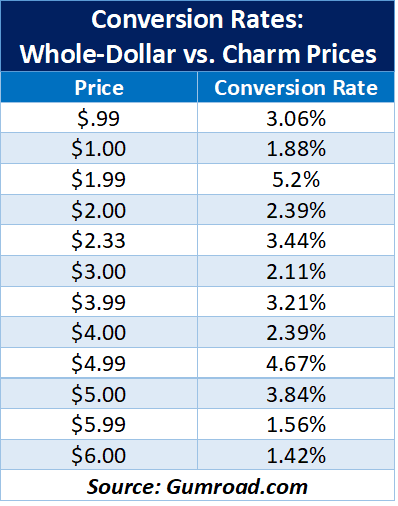There’s a lot to consider when establishing your self-storage rental rates, and it isn’t all about the numbers. Learn the role psychology plays in enticing consumer business and how to best manage your pricing and discounts.

Discussions around setting rental rates in the self-storage industry tend to focus on vacant units (street rates) and strategies to increase rent for existing tenants. While that’s all well and good, it’s also important to consider the psychology behind these decisions. Let’s look at some common approaches to enticing consumer business and how they might impact your bottom line.
Charm and Prestige Pricing
Even if you haven’t heard the terms “charm pricing” or “prestige pricing,” you’ve certainly experienced them in your day-to-day life. One involves the appeal of using the number nine in prices, while the other relates to the perception of product or service quality. They involve manipulating prices to elicit a certain feeling and action from the consumer. Both are used regularly in the retail world. Let’s see how we might leverage them in self-storage.
The charm-pricing theory suggests that when the cost of a product or service ends in a nine, it becomes more attractive to the buyer due to the perception that it’s a bargain. For example, if one gas station has fuel priced at $2 per gallon and another is selling it for $1.99, most consumers will choose the latter. They feel like they’re getting a significantly better deal, despite the actual savings being only one cent.
Online retailer Gumroad performed a study on the number of people who purchase products with whole-dollar prices vs. prices ending in a nine. As you can see in the accompanying table, the charm prices were much more effective at enticing a purchase.

If you’ve ever dropped your street rates from a whole-dollar amount to one penny or dollar less to undercut your self-storage competitors, then you’ve already realized the potential advantage of charm pricing. Of course, it’s always better to sell your units based on facility features and benefits than to focus exclusively on price; but if yours is a highly competitive market, consider the value of this psychological approach.
Prestige pricing is the opposite of charm pricing. In this theory, the perceived quality of a product or service is reduced when the price ends in a nine. Prestige pricing is typically associated with luxury brands or higher-quality offerings. In these cases, prices typically end in a zero or a five. Instead of listing a product as $99, for example, it would be $100.
This approach is intended to help consumers feel they’re buying a product of high quality rather than getting a bargain-basement deal. In self-storage, this may be effective if you have a class-A property and offer amenities competitors don’t. The challenge is educating consumers to see the difference between you and other facility operators.
Concessions
Whatever approach you take in setting your rental rates, you have to factor in move-in specials and other discounting, two very common practices in self-storage. These shouldn’t be automatic when quoting rates to potential customers. Instead, they should be used as a tactical tool to close the sale when necessary.
To maintain performance consistency and increase profitability, it’s important to teach employees when and why to offer a concession. It’s also critical to track your discounting and understand its impact on the bottom line. Here are four ways to control price reductions:
Guide your staff. Mystery shopping and recorded sales calls are valuable, recommended tools for gaining insight to how facility managers are using discounts. Are they offering specials immediately or waiting until there’s pushback on price? There’s a common misconception and fear among staff that if they don’t offer a concession up front, they’ll lose the rental. You can change this perception through proper training.
Gather data. Business-management guru Peter Drucker said, “If you can’t measure it, you can’t improve it.” This holds true with self-storage pricing strategies. When it comes to discounts, I suggest you track the following:
Total move-ins by unit size
The street rate for each unit rented
Total move-ins receiving a discount or special
The specific concessions given on each unit
Let’s say your managers rented 10 units. Each was a 10-by-10 with a street rate of $100. Eight of those got some form of concession; six received first month free, while two received 50 percent off of the first month. Now, calculate how much was lost. The amount relinquished on first-month-free specials was $600, while revenue lost on the 50 percent discount was $100. You and your staff need to know and understand the total impact each month.
Set goals. Once you establish a baseline for discounts, the next step is to set specific objectives for your managers. For example, if they tend to lean heavily on a first-month-free offer, set a goal to shift to 50 percent off the first month instead. Once that’s accomplished, transition to 25 percent off. Any improvement will make a positive impact on your bottom line. Just pay careful attention to any change in your conversion rate, as it can indicate market pushback or a lack of customer engagement.
Create governance rules. The final step is to set up governance rules in your facility-management software. This will help ensure all employees adhere to your chosen approach and prevent them from offering unauthorized concessions. Here’s a sample rule set:
Unit types/sizes that are less than 80 percent occupied can receive first month free, 50 percent off the first month or 25 percent off the first month.
Unit types/sizes that are 80 percent to 85 percent occupied can receive 50 percent off of the first month or 25 percent off the first month.
Unit types/sizes that are 86 percent to 90 percent occupied can receive 25 percent off the first month.
Any unit types/sizes that are above 90 percent occupied cannot receive any move-in specials.
A Successful Strategy
Setting your self-storage rental rates is something of an art. When determining your prices, you need to consider consumer mindset, your facility features and benefits, what your competitors offer and charge, and more. Consider leveraging retail strategies like charm and prestige pricing, and don’t lean too heavily on discounts. It takes time and patience to implement a pricing strategy that encourages employee buy-in and confidence. However, by setting and following best practices, you’ll set yourself up for success and increase your bottom line.
Peter Spickenagel is president and CEO of Citizen Storage Management, a third-party management and acquisition company. He’s worked in the self-storage industry for more than 10 years and managed more than 90 self-storage properties nationwide comprising more than 5 million net rentable square feet in 40,000 units. He’s also president of the Michigan Self Storage Association and a licensed real estate broker in the state. To reach him, email [email protected].
About the Author(s)
You May Also Like





